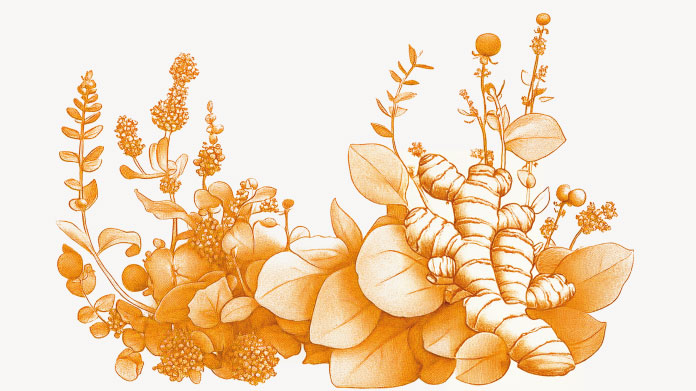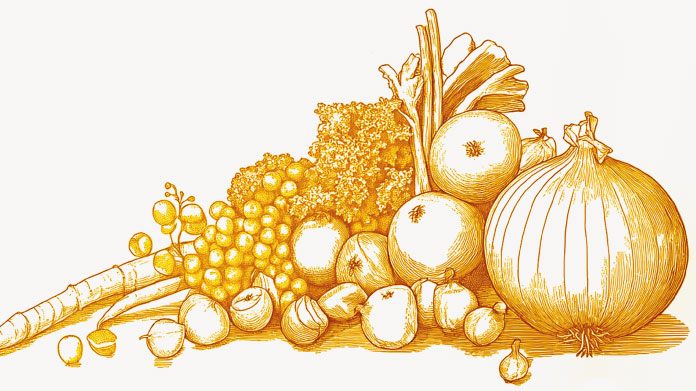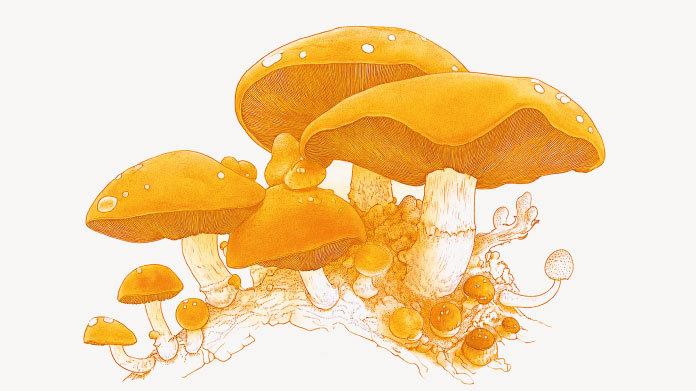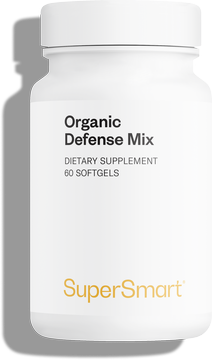Which supplement should you take if you’re allergic to pollen?
Every year, the arrival of spring triggers a wave of hay fever, the allergy to pollen that gives rise to rhinitis and allergic conjunctivitis. Here’s our lowdown on the natural methods and supplements you need to combat seasonal allergies.
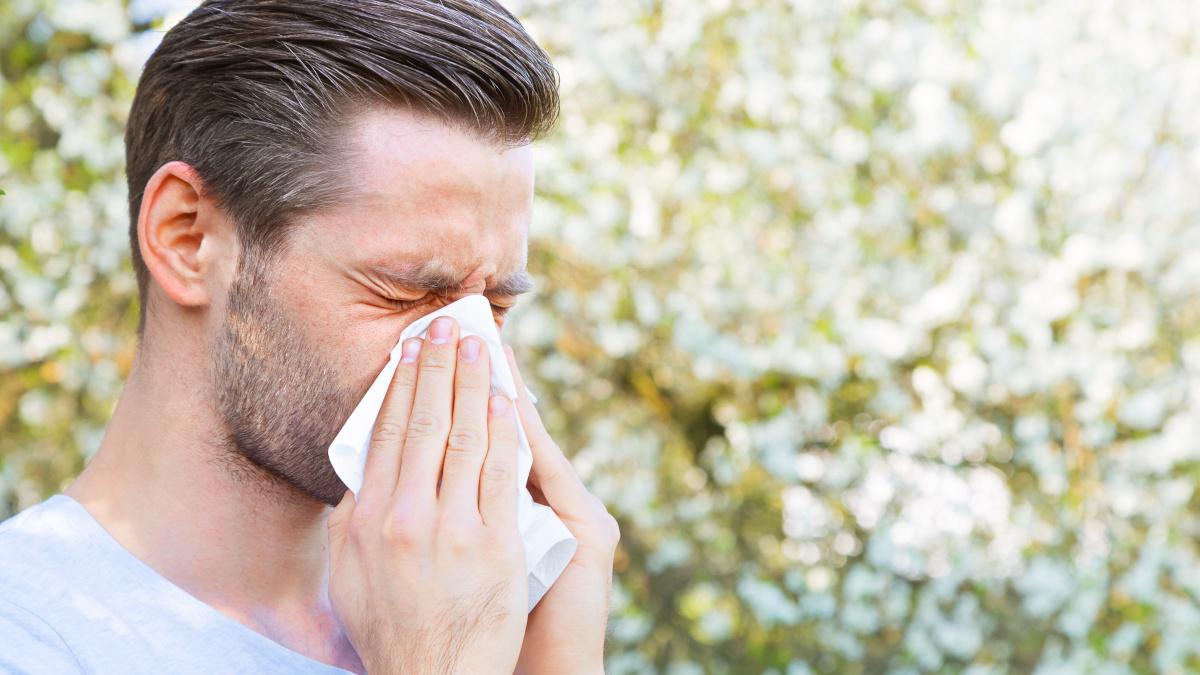
Hay fever: spotlight on the allergy’s mechanisms
An allergy is nothing more than a dysfunction of the immune system, in which it becomes intolerant to substances that are, on the face of it, harmless: pollen, cat or dog dander, dust mites, etc. (1)
More specifically, there are two types of mechanism at work in allergic reactions:
- either T lymphocytes, specific immune cells which infiltrate the skin or bronchial tubes and react to the allergens. This is the case in asthma and eczema, for example (2);
- or antibodies called immunoglobulin E (IgE), which bind to cells called polynuclear basophils and mast cells, particularly in the skin, lungs and digestive tract (3).
When these antibodies are presented with an allergen which they are ‘programd’ to react against, the cells to which they are bound release inflammatory chemicals (histamine, prostaglandins, leukotriene, tryptase, etc.) which are responsible for the allergic symptoms: secretions, red blotches, etc. (4)
Hay fever is almost always due to what is termed an ‘immediate’ allergy, one caused by IgE antibodies, and normally linked to hereditary factors.
The various allergens (pollen, metals ...)
While scientists remain circumspect about the undeniable increase in allergy prevalence in Western populations, they all agree that two factors are behind allergies: (5)
- heredity: children of allergic parents are more likely to be allergic themselves;
- exposure to allergens: here, opinion is more divided. Some think that a lack of exposure encourages a disproportionate immune response, while others believe that an initial exposure without a reaction is needed in order to trigger the mechanisms involved in allergies
Either way, there are five main types of allergen: (6)
- airborne allergens: which enter the body via the airways, such as pollen, dog and cat dander, etc.;
- food allergens: which enter the body via the digestive tract, such as cow’s milk proteins, peanuts, etc.;
- contact allergens: metals (nickel, chrome), henna, cosmetics, etc.;
- venom allergens;
- drugs.
Combatting pollen allergies naturally
Despite the fact that allergy prevalence in Western populations has been rising relentlessly over the last 30 years or so, reaching 25% to 30%, there are few natural methods that effectively combat seasonal allergies (7).
Hay fever (rhinitis and allergic conjunctivitis), in particular, which affects 15% to 20% of the population in the West, is directly linked to spring flowering and the resulting release of pollen which is carried by the wind and dispersed everywhere.
A number of strategies can be employed to at least reduce the effects of hay fever:
- wash out your eyes, morning, noon and night, with artificial tears or physiological serum, to get rid of pollen and reduce allergic conjunctivitis;
- rinse your nasal passages and sinuses using a saltwater spray or a special nasal irrigation device or ‘neti pot’, filled with lukewarm saltwater to eliminate any pollen on mucous membranes;
- regularly ventilate your home and vacuum your rugs, carpets, and other textiles where pollen is likely to accumulate.
Dietary supplements for tackling allergens
Besides these interventions, taking certain nutritional supplements can also help your body cope with seasonal allergies.
For example, as oligoproanthocyanidins (OPC) from maritime pine bark have been recognized for many years, especially by naturopaths, for supporting respiratory health, extracts of maritime pine (such as the supplement Pycnogenol®) may offer benefits in fighting the symptoms of hay fever (8).
Another strategy relies on immunomodulation, a method introduced into medical practice in the 1960s to help prevent rejection of transplants by reducing the body’s targeted immune response (9).
A similar approach can be used to combat allergies, the principle here being to reduce the response targeted at allergens, without damaging – and even stimulating – the body’s overall defenses.
Astragalus would seem to be an excellent candidate for this approach. The high polysaccharide content of this plant, native to north-eastern China and used for millennia in their traditional pharmacopoeia, gives it immunomodulatory and immunostimulant properties (10).
So to help tackle seasonal allergies such as hay fever, it’s worth considering a course of astragalus supplements (such as the product Astragalus Extract).
According to several studies, other plant substances such as spirulina, bromelain and common butterbur all have anti-histamine properties(11-13). As we know, the body releases a molecule called histamine during an allergic reaction, which is responsible for sneezing, redness, etc. These plants can thus help prevent these unwelcome effects.
For greater efficacy and ease of use, you also have the choice of opting for the comprehensive supplement Aller Fight, a synergistic formulation that combines maritime pine, astragalus, spirulina, bromelain and common butterbur.
References
- https://www.inserm.fr/dossier/allergies/
- ROMAGNANI, Sergio. The role of lymphocytes in allergic disease. Journal of Allergy and Clinical Immunology, 2000, vol. 105, no 3, p. 399-408.
- GOULD, Hannah J. et SUTTON, Brian J. IgE in allergy and asthma today. Nature Reviews Immunology, 2008, vol. 8, no 3, p. 205-217.
- KAWAKAMI, Toshiaki, KASHIWAKURA, Jun-ichi, et KAWAKAMI, Yuko. Histamine-releasing factor and immunoglobulins in asthma and allergy. Allergy, Asthma & Immunology Research, 2014, vol. 6, no 1, p. 6-12.
- DAVIES, R. J., RUSZNAK, C., et DEVALIA, J. L. Why is allergy increasing?--environmental factors. Clinical and experimental allergy: journal of the British Society for Allergy and Clinical Immunology, 1998, vol. 28, p. 8-14.
- https://www.ameli.fr/assure/sante/themes/allergies/comprendre-allergies
- BERGMANN, Karl-Christian, HEINRICH, Joachim, et NIEMANN, Hildegard. Current status of allergy prevalence in Germany. Allergo journal international, 2016, vol. 25, no 1, p. 6-10.
- ROSS, Stephanie Maxine. Allergic Rhinitis: A Proprietary Extract of: Pinus pinaster Aiton:(Pycnogenol) Is Found to Improve the Symptoms Associated With Allergic Rhinitis. Holistic Nursing Practice, 2016, vol. 30, no 5, p. 301-304.
- https://www.ipubli.inserm.fr/bitstream/handle/10608/1587/2000_12_1340.pdf?sequence=4
- JUTEL, Marek, AGACHE, Ioana, BONINI, Sergio, et al.International consensus on allergy immunotherapy. Journal of Allergy and Clinical Immunology, 2015, vol. 136, no 3, p. 556-568.
- Nourollahian M, Rasoulian B, Gafari A, Anoushiravani M, Jabari F, Bakhshaee M. Clinical comparison of the efficacy of spirulina platensis and cetirizine for treatment of allergic rhinitis. Acta Otorhinolaryngol Ital. 2020;40(3):224-229. doi:10.14639/0392-100X-N0139
- Secor ER Jr, Szczepanek SM, Castater CA, et al. Bromelain Inhibits Allergic Sensitization and Murine Asthma via Modulation of Dendritic Cells. Evid Based Complement Alternat Med. 2013;2013:702196. doi:10.1155/2013/702196
- Schapowal A; Petasites Study Group. Randomised controlled trial of butterbur and cetirizine for treating seasonal allergic rhinitis. 2002 Jan 19;324(7330):144-6. doi: 10.1136/bmj.324.7330.144. PMID: 11799030; PMCID: PMC64514.
Keywords
4 Hours
Ordering was easy and the product was…
Ordering was easy and the product was delivered with no problems. Appreciated that I was notified when it would arrive. Thanks!
MascarC
5 Days
Great customer service - responsive …
I ordered from them and my item was unavailable for sometime. I was super happy when they reactivated my order and shipped my item which arrived very quickly. Great customer service.
Ruth Rueter
6 Days
Super fast shipping
Super fast shipping
Donald Borling
9 Days
Reputable companysearch and the number of…
The research and the number of selection of products.
NAKHJAVAN Shervin
22 Days
The Anti Aromatase is a great product
The Anti Aromatase is a great product. You just need to have constant inventory. Recently this product has been out of stock.
GEORGE Verne
24 Days
Great help on chat
Great help on chat. Knowledgeable and friendly.
Jason Argos
27 Days
Customer service was fast and friendly.
Customer service helped to stop the transaction process of the subscription. I appreciated that.
Greenie
28 Days
I order here due to the high quality of…
I order here due to the high quality of the products and the quick delivery of items - thank you
Barbara J
29 Days
SuperSmart's Eye Pressure supplements: highly recommended!
I purchase SuperSmart's Eye Pressure supplements regularly for over 5 years, and gotta say they are truly a wonderful product for my Glaucoma. Highly recommended if you have eye pain from your Glaucoma.
D. Martinez
34 Days
Quick service
Quick service
MONELL
34 Days
Speedy service.
Speedy service.
ROSENTHAL Marvin
38 Days
Clear website- Efficient
Clear website. Excellent search engine and fast delivery!
Mohamad Hussein
40 Days
They have great products.
They have great products.
Vickie
41 Days
Great Shipping Time!
You Have A Great Shipping Time! Praise The Lord!
DMHoge
43 Days
Doctor Recommended!
Good pricing, very good availability, doctor recommended (couldn't find what I needed anywhere else), and it took only a week to arrive (which I can't complain about).
Al

